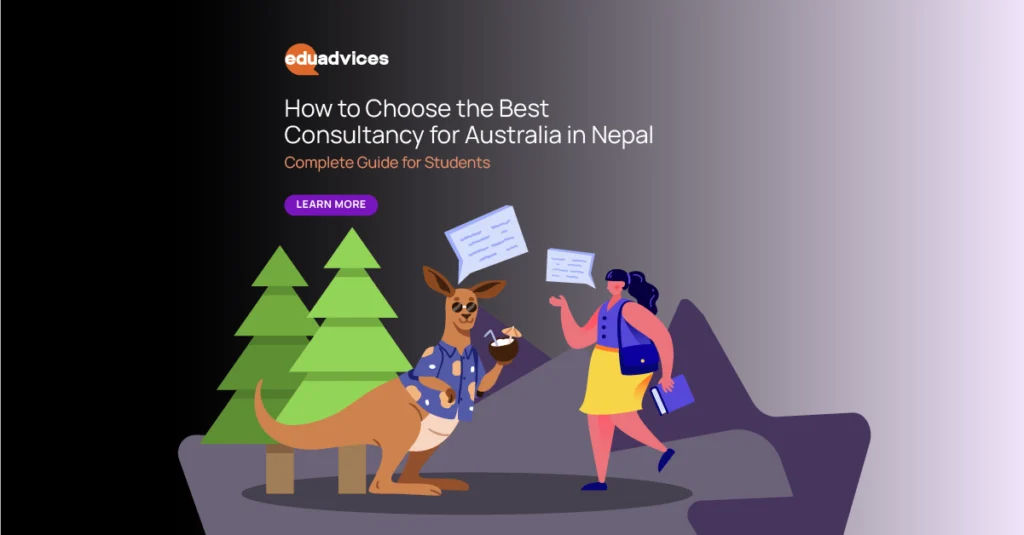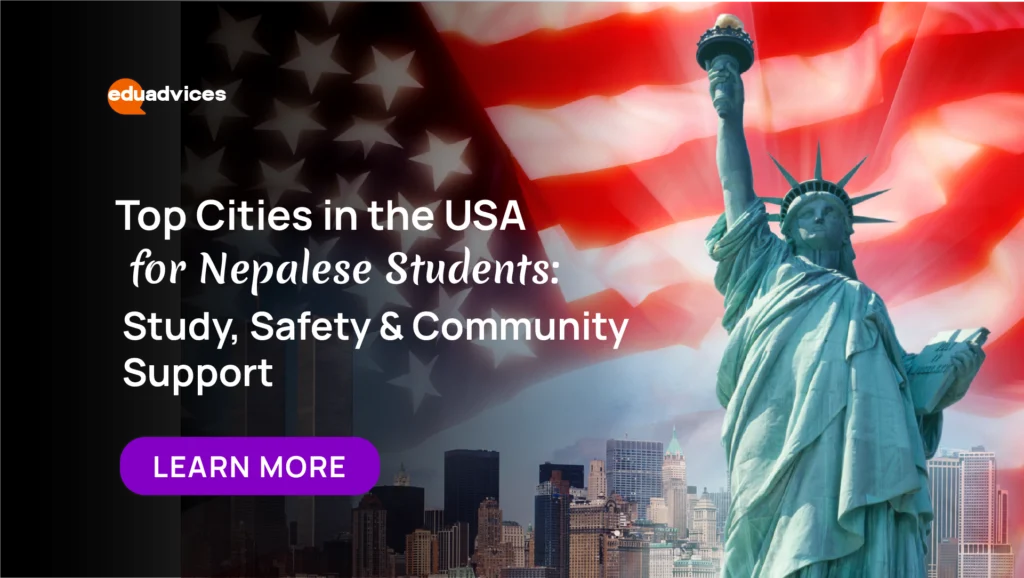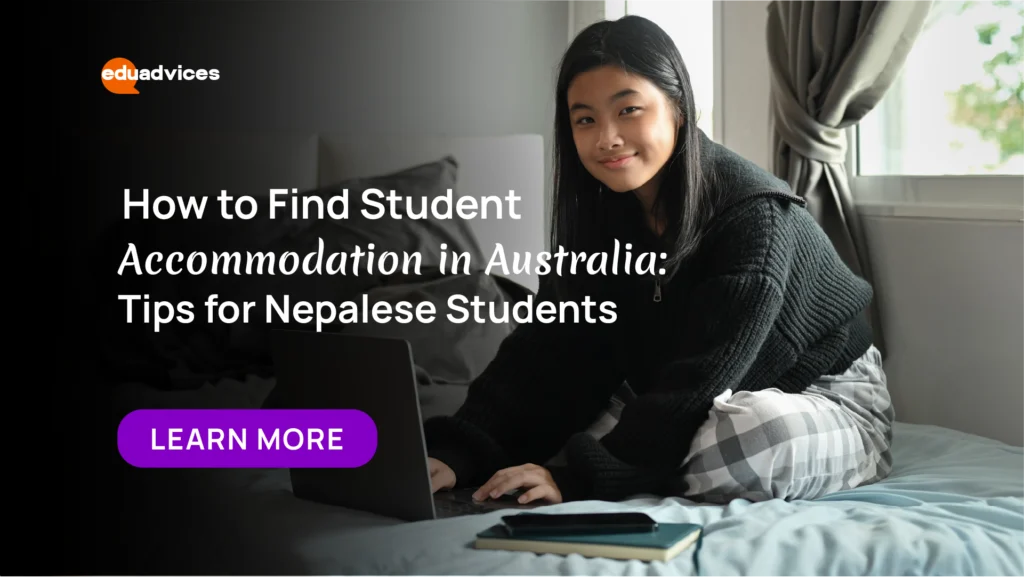Nepal to Australia: Study, Work & Migration Explained
Australia has consistently been one of the top destinations for Nepalese students and professionals seeking quality education, international work experience, and long-term migration opportunities. With world-class universities, a multicultural environment, and strong demand for skilled workers, Australia offers a roadmap for personal, academic, and professional growth. However, the journey from Nepal to Australia is not just about getting a visa or a university offer. It requires careful planning, understanding of immigration policies, and smart decisions at every step. From choosing the right course to securing post-study work and eventually obtaining permanent residency (PR), each stage has its own challenges and rewards. In this guide, we will talk you through everything you need to know– from study and work options to migration pathways and consultancy support available for Nepalese students and professionals. Table of Contents Nepal to Australia Roadmap Study Pathways for Nepalese Students Work-Study in Australia: Regulations Explained PR and Migration Options After Graduation Consultancy Which Provides End-to-End Support Tips for a Successful Nepal to Australia Journey FAQs Conclusion Ready to Start Your Study in Australia Journey? Nepal to Australia Roadmap Planning a move from Nepal to Australia involves multiple steps. Understanding this roadmap can help you navigate the journey smoothly: Step 1: Research & Course Selection The first and most important step is to define your goal–are you primarily focused on education, career development, or migration? The decision should align with your long-term objectives. Research universities, program, and study locations thoroughly. There are many things to consider, such as your interests, intended career and the skills that are most in demand. For choosing what to study considering your interest, you can check this detailed blog by Australia Government. However, for choosing the university consider: Accreditation and global ranking of the institution Course relevance to your career and PR occupation list Duration, tuition fees, and living costs Post-graduation job prospects Step 2: University & Program Applications Once you’ve chosen a course, apply directly to Australian universities or vocational institutions. Ensure your academic records, recommendation letters, and English language test scores (IELTS, TOEFL, or PTE) meet the requirements. Once you’ve shortlisted your preferred courses, start the application process. Most universities in Australia allow direct applications through their online portals or via authorized education consultancies. Typical documents required include: Academic transcripts and certificates English Proficiency test results (IELTS, TOEFL, or PTE) Statement of Purpose(SOP) Letters of recommendation Passport and identification documents A well-written SOP plays a vital role as it should reflect your academic motivation, career plans and reasons for choosing Australia. If you want to learn to write SOP perfectly then check this detailed blog from which you can write winning SOP. Step 3: Student Visa Application After receiving your Confirmation of Enrolment (CoE) from an Australian institution, you can apply for an Australian student visa (subclass 500). This visa allows you to stay for the duration of your course and work part-time during study periods. Visa requirements include: Confirmation of Enrolment (CoE) from an Australian institution Proof of sufficient funds to cover tuition and living costs Health and character assessments Overseas Student Health Cover (OSHC) English language proficiency scores Processing times can vary, so it is advisable to apply at least 3-4 months before your course begins. Step 4: Arrival & Orientation Once your visa is granted, you can travel from Nepal to Australia. You should consider taking all necessary items which prevents unnecessary stress at their destination. For more detailed knowledge on what to pack before moving abroad, consider checking this brief blog. After you move from Nepal to Australia, most universities provide orientation programs for international students, helping you understand academic expectations, legal requirements, and available support services. These orientation session cover: Campus facilities and academic guidelines Accommodation assistance Student support services Legal rights and work regulations in Australia Step 5: Work While Studying Working part-time while studying not only provides financial support but also helps students gain valuable experience. Jobs in hospitality, retail, customer service, or internships related to your field can build confidence and skills that employers value later on. Keep in mind: You can work up to 48 hours per fortnight during study periods You can work full-time during scheduled breaks You must maintain academic progress to comply with visa conditions Building good relationships with employers and supervisors can lead to internship or post-graduation opportunities. Visit Part Time Work Opportunities for Nepalese Students in Australia to know about where and how to apply. Here are the 10 highest-paying part-time jobs in Australia for Indian students that offer flexible hours and competitive pay: Part-Time Jobs for International Students Salary for Part-Time Jobs in Australia for International Students Babysitter $15 to $20 per hour Milk Deliverer $19 to $22 per hour Delivery Person $18 to $25 per hour Driver $20 to $25 per hour Personal Trainer $20 to $25 per hour Cleaner $20 to $25 per hour Freelancer Varies based on your skills and industry Head Server $25 per hour Tutor $20 to $30 per hour Travel Agent Based on sales and commissions Step 6: Post-Graduation Work Opportunities After completing your course, you may be eligible for a Temporary Graduate Visa (subclass 485). This visa enables students to stay, work, and even explore pathways toward permanent residency. The 485 visa is divided into two main streams, depending on your level of qualification and field of study: Graduate Work Stream: This stream is designed for international students who have recently completed qualifications that relate to occupations listed on Australia’s Skilled Occupation List (SOL). Graduates under this stream can typically stay and work in Australia for up to 18 months, though recent updates may allow longer durations depending on regional areas or policy changes.It provides an excellent chance to gain professional experience directly aligned with your field of study which is an essential step toward meeting the requirements for skilled migration visas, such as the Skilled Independent Visa (subclass 189) or Skilled Nominated Visa (subclass 190). Post-Study Work Stream This stream is available for students who have completed











